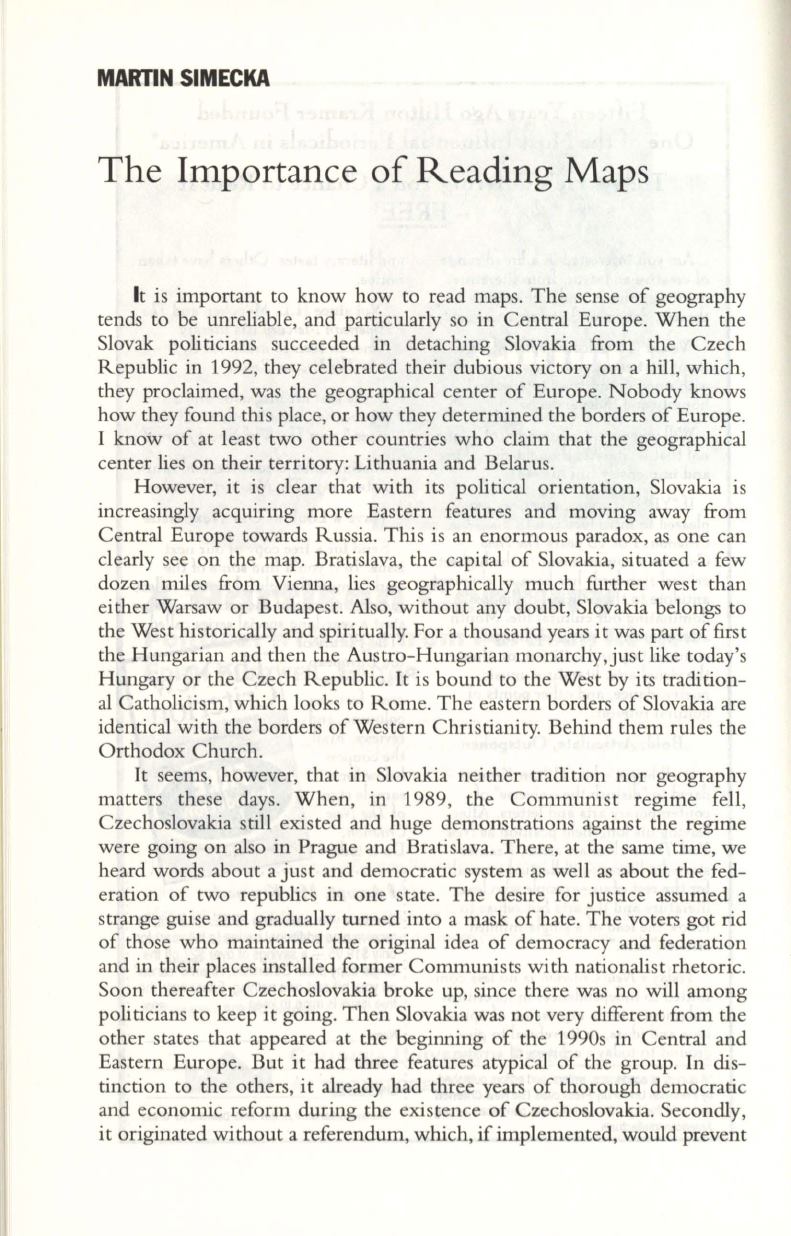
MARTIN SIMECKA
The Importance of R eading Maps
It
is important to know how to read maps. The sense of geography
tends to be unreliable, and particularly so in Central Europe. When the
Slovak poli ticians succeeded in detaching Slovakia from the Czech
Republic in 1992, they celebrated their dubious victory on a hill, which,
they proclaimed, was the geographical center of Europe. Nobody knows
how they found this place, or how they determined the borders of Europe.
I know of at least two other countries who claim that the geographical
center lies on their territory: Lithuania and Belarus.
However, it is clear that with its political orientation, Slovakia is
increasingly acquiring more Eas tern features and moving away from
Central Europe towards Russia. This is an enormous paradox, as one can
clearly see on the map. Bratislava, the capital of Slovakia, situated a few
dozen miles from Vienna, lies geographically much further west than
either Warsaw or Budapest. Also, without any doubt, Slovakia belongs to
the West historically and spiritually. For a thousand years it was part of first
the Hungarian and then the Austro-Hungarian monarchy,just like today's
Hungary or the Czech Republic. It is bound to the West by its tradition–
al
Catholicism, which looks to Rome. The eastern borders of Slovakia are
identical with the borders of Western Christianity. Behind them rules the
Orthodox Church.
It seems, however, that in Slovakia neither tradition nor geography
matters these days. When, in 1989, the Communist regime fell,
Czechoslovakia still existed and huge demonstrations against the regime
were going on also in Prague and Bratislava. There, at the same time, we
heard words about a just and democratic system as well as about the fed–
eration of two republics in one state. The desire for justice assumed a
strange guise and gradually turned into a mask of hate. The voters got rid
of those who maintained the original idea of democracy and federation
and in their places installed former Communists with nationalist rhetoric.
Soon thereafter Czechoslovakia broke up, since there was no will among
politicians to keep it going. Then Slovakia was not very different from the
other states that appeared at the beginning of the 1990s in Central and
Eastern Europe. But it had three features atypical of the group. In dis–
tinction to the others, it already had three years of thorough democratic
and economic reform during the existence of Czechoslovakia. Secondly,
it originated without a referendum, which,
if
implemented, would prevent


